This Is What Makes This Bounce Different
As bad as the major averages want to pull back,
they just continue to hang in there. Yesterday’s drop in the Dow
(
$INDU.X |
Quote |
Chart |
News |
PowerRating)
was proof of this, as it rallied off its lows for the closing bell. There’s
one fact that rings true in a Bull Market: things can get overbought and stay
overbought.
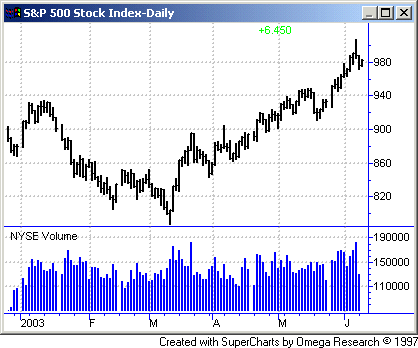
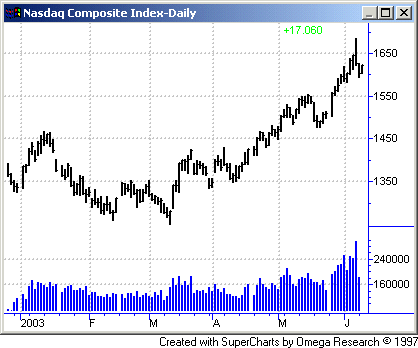
There have been sporadic
bouts with distribution, or institutional selling, but the major averages have
refused to build on any declines.
Leading stocks have acted in
a similar fashion. Ebay
(
EBAY |
Quote |
Chart |
News |
PowerRating) is
one such example. The company boasts some of the strongest earnings and
fundamental data in the Internet group, and the stock refuses to decline. If
it does, its 50-day moving average around 92 would be the first area of
support.

Hi
Tech Pharma
(
HITK |
Quote |
Chart |
News |
PowerRating) is another example. It has
rallied $2 this week as the market has declined.
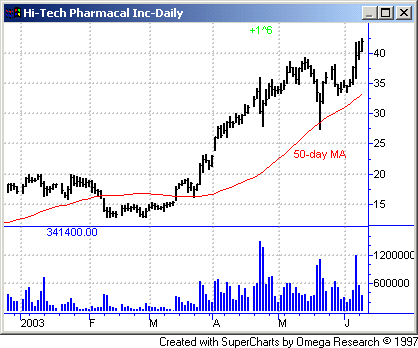
We are seeing other strong
stocks, such as J2 Global
(
JCOM |
Quote |
Chart |
News |
PowerRating)
find consistent support. Thus far, JCOM has held at its 50-day moving average
despite the heavy volume.
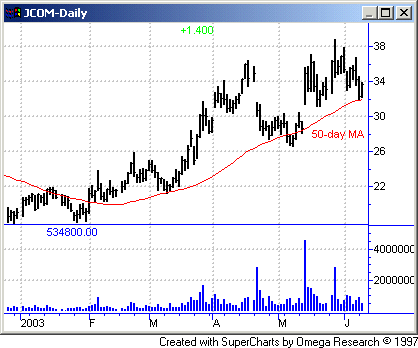
One of the strongest names I
have seen is in Ryland
(
RYL |
Quote |
Chart |
News |
PowerRating). Yes, you heard me right! The homebuilding
group has been on a tear, lead by names like RYL and Hovnanian
(
HOV |
Quote |
Chart |
News |
PowerRating). Low
interest rates continue to fuel this group’s advance and with Ryland’s
low-volume declines and heavy-volume rallies, the move may not be over anytime
soon.
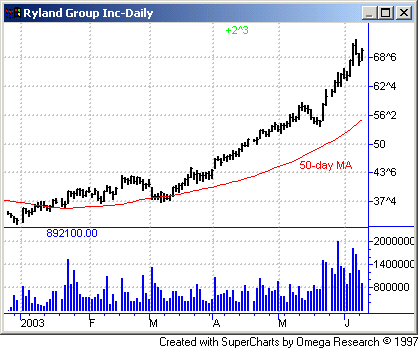
We have seen the market show
consistent, solid evidence that large money managers are accumulating stock.
This has been occurring since March, and doesn’t usually end soon, considering
the leadership we have seen. At this point, it is most profitable to target
leading stocks. These can best be defined as companies with extremely sound
fundamentals and strong technical patterns. In almost every case, these
companies will trade at expensive levels as compared to historical Wall Street
standards. For this reason, it is important to buy them at levels where the
chance of success is greatest: pullbacks to key areas of support or as they
emerge from sound price bases.
On May 22, I was involved in an
investment discussion dinner with other money managers where each of us brought
an idea to the table to discuss. Many of the ideas involved traditional
valuation methods of stocks that seemed “cheap” or could bounce. One such
example was a well-received speech on Microsoft
(
MSFT |
Quote |
Chart |
News |
PowerRating). The stock closed
that day at 24.16; and guess how far it has gone almost a month later? NOWHERE!
Just to allay curiosity, my recommendation was Ryland;
I couldn’t have predicted the recent rise, but all the pieces of the puzzle were
there.
A few names that have done well
and may be worth watching include: Sandisk
(
SNDK |
Quote |
Chart |
News |
PowerRating), Yahoo!
(
YHOO |
Quote |
Chart |
News |
PowerRating),
Amazon.com
(
AMZN |
Quote |
Chart |
News |
PowerRating), UT Starcom
(
UTSI |
Quote |
Chart |
News |
PowerRating), United Online
(
UNTD |
Quote |
Chart |
News |
PowerRating)
and American Pharma
(
APPX |
Quote |
Chart |
News |
PowerRating).
One last tidbit that has been
evident during the past three months has been the overwhelming number of new
highs in the market vs. new lows. This statistic has far exceeded the bear
market “bounces” we have seen since 2000. As I punch this column out, the
combined number for NYSE/Nasdaq/AMEX stands at 440 new Highs to 12 New
Lows! What could possibly lead us lower than a short-term correction and
temporary profit-taking?
Good Investing!
